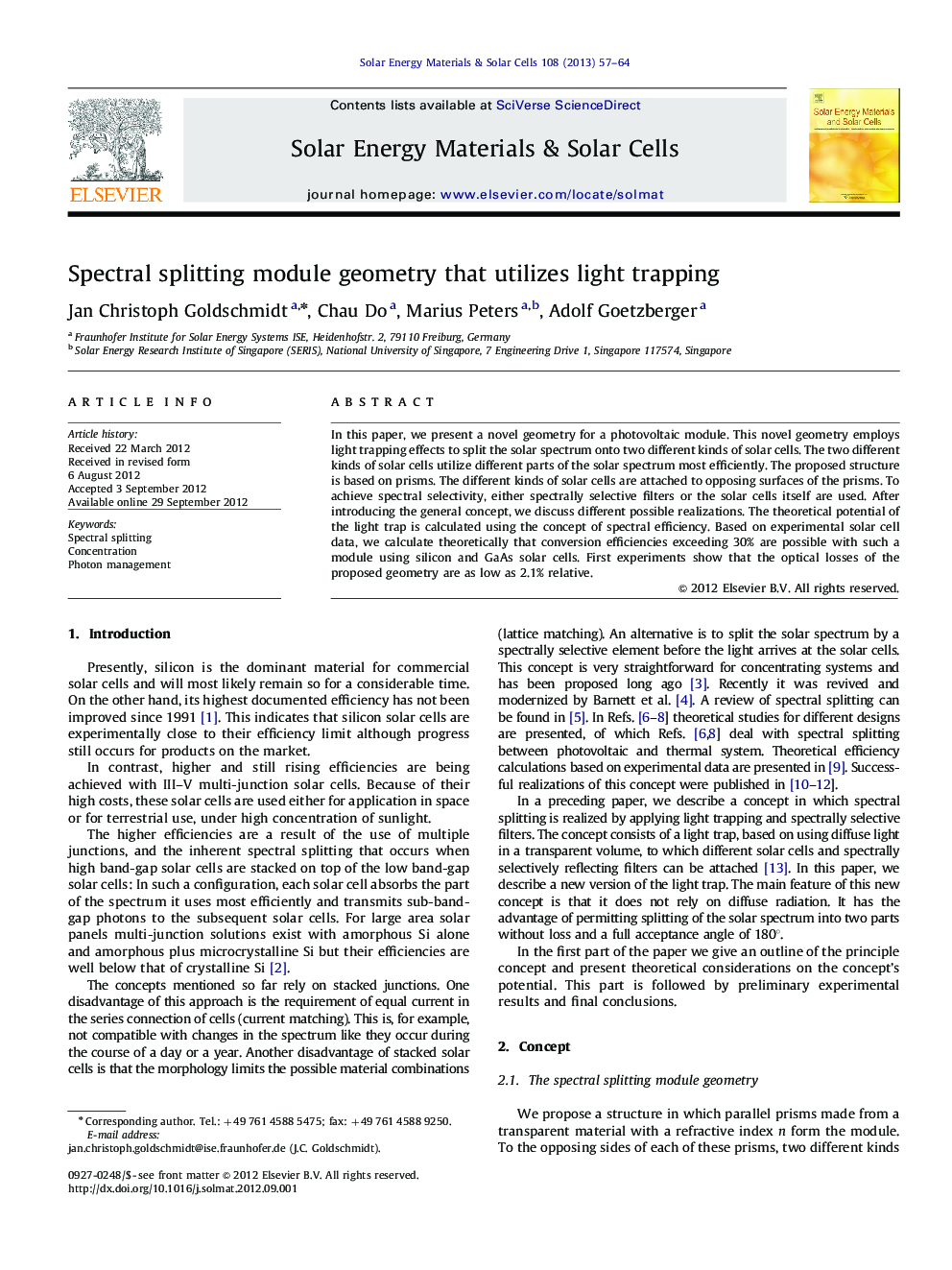| Article ID | Journal | Published Year | Pages | File Type |
|---|---|---|---|---|
| 78677 | Solar Energy Materials and Solar Cells | 2013 | 8 Pages |
In this paper, we present a novel geometry for a photovoltaic module. This novel geometry employs light trapping effects to split the solar spectrum onto two different kinds of solar cells. The two different kinds of solar cells utilize different parts of the solar spectrum most efficiently. The proposed structure is based on prisms. The different kinds of solar cells are attached to opposing surfaces of the prisms. To achieve spectral selectivity, either spectrally selective filters or the solar cells itself are used. After introducing the general concept, we discuss different possible realizations. The theoretical potential of the light trap is calculated using the concept of spectral efficiency. Based on experimental solar cell data, we calculate theoretically that conversion efficiencies exceeding 30% are possible with such a module using silicon and GaAs solar cells. First experiments show that the optical losses of the proposed geometry are as low as 2.1% relative.
Graphical abstractFigure optionsDownload full-size imageDownload as PowerPoint slidehighlights► Flat module geometry that allows to split the solar spectrum onto two solar cells enabling highest efficiencies. ► Spectral splitting in this geometry is lossless from a fundamental point of view. ► Module can also utilize diffuse radiation, so no tracking needed or combination with concentrator systems possible. ► First experiments show very low losses of only 2.1%. ► Theoretically calculated potential based on real solar cell data shows efficiencies over 30% for a GaAs/Si system.
